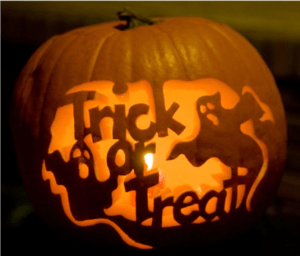Event strategy and planning require a supreme level of organisation, time management, and communication skills. In addition to the benefits events inherently offer creators, such as revenue and engagement, creating events can be a highly effective marketing tool for companies, providing a platform to promote your business and build relationships with your target audience.
Whether you’re hosting a conference, trade show, or networking event, there are a number of strategies and ideas you can use to make your event a success. So, we created this event marketing guide to light the way. We’ve included tips, event strategy examples, and links to templates that you can use to get started.
Table of contents
What are the 6 Ps in event marketing?
What are the benefits of event marketing?
Event marketing examples to inspire your planning
Identifying your event marketing goals
Promotional channels for event marketing and how to use them
9-step guide to successful event marketing
Event marketing ideas to drive attendance and engagement
Your 12-month event marketing checklist
What is event marketing?
At its simplest, event marketing is focused on creating live experiences that promote a brand, service, or product.
One of the biggest reasons companies attend, or host events is to establish and build their brand and identity. There are different types of event marketing, including industry events hosted by a single company, trade shows, and digital experiences such as virtual conferences or live-streamed workshops. When deciding which approach is right for you, think about who your customer is and what kind of event they’re likely to attend.
Successful event marketing strategies also include effective promotional efforts that encourage potential attendees to buy tickets. Promotion of the event encompasses various inbound and outbound marketing techniques, such as email, social media, event discovery sites, retargeting, and search engine optimisation (SEO). We’ll go over each of these in detail later.
What are the 6 Ps in event marketing?
The keys to successful event marketing can be boiled down to six essential components, also known as the 6 Ps. These components are:
- Purpose — the reason you’re hosting the event and what it aims to achieve for your brand
- Plan — the strategy you’ll incorporate to organise the event. Have detailed steps for how the event will be executed
- Promotion — the strategies and activities employed to market and advertise the event
- People — the target audience, attendees, and stakeholders involved in the event. Don’t forget to include support staff
- Place — the venue where the event will take place. Be sure you’re aware of the factors that affect venue costs
- Product — the event itself, including the program, speakers, and overall experience. Know how to analyse your event to understand what works and what doesn’t
What are the benefits of event marketing?
Events are multi-sensory experiences that engage an audience on a level that is simply not possible through other types of marketing. Events can help you meet important business goals, including:
- Increasing demand for your product or service
- Building recognition with prospective or current customers
- Widening your audience or your clients’ audiences
- Generating revenue from the event itself
With a clear strategy and a plan to get you there, events are well worth the marketing investment — you just need to find the right event activity that fits your brand. Need some inspiration? Read on.
Event marketing examples to inspire your planning
Choosing the right event activity for your business will depend on the industry you’re in, your goals, and your budget. Here we’ve reviewed some of the most common types of in-person and online event marketing ideas.
In-person examples
- Conferences: Hosted by a company or organisation, these large, in-person events bring together attendees around a specific purpose or topic, such as education
- Workshops: These events are smaller meetings or field events during which an expert leads a group in a more formal learning environment
- Account-based marketing events: These highly targeted and customised experiences are designed to address specific clients’ or prospects’ needs
- Intimate breakfasts, lunches, or dinners: Meal-based events are generally small events that focus on networking or thought leadership. They are usually customer or prospect-focused
- Trade shows: In-person events that bring together large groups of individuals or companies in a particular industry or profession. These provide space to network and show off new products
- Seminars: A seminar is a training or topic-specific lecture with a question-and-answer portion to engage the audience afterward
Online examples
- Webinars: An online version of a seminar, a webinar usually features a live presentation with a moderator, guest speakers, and a Q&A session
- Livestreaming events: You can either livestream a physical event or create a live virtual event. Live online video can include a conversation that viewers can participate in through comments or a chat feature.
- Virtual events: Rather than meeting in a physical location, virtual events occur entirely online via an event management platform. These events are highly interactive and look and feel a lot like their physical counterparts.
- Classes: Like an in-person class, online educational events are focused on showcasing a teachable skill or subject
Identifying your event marketing goals
Before you start planning your event, you need to make a list of your trackable goals, also known as key performance indicators (KPIs). These KPIs will provide a yardstick by which to measure your event’s success after everything is over.
Having the right event metrics can help you fine-tune your event marketing strategies, improve sales, and increase attendance turnout. If you’re not sure where to start, here are six metrics to measure your success.
1. Registrations
Registrations are the most important metric to consider as the precursor to overall event marketing success. Look at peaks in registration to determine if any particular marketing effort drove the spike and use the final number of attendees as a benchmark for your next event.
2. Attendance
Compare the number of registrants you had to the number of attendees who showed up. A large percentage of no-shows could indicate that your event was marketed well, but people didn’t feel invested or interested enough to actually attend — fortunately, there are ways to avoid no-shows.
3. Lead generation
Many businesses choose to use event marketing to generate leads, and you can measure how many leads your event brings in for your sales funnel (the quality of which is up to you to establish pre-event).
4. Attendee feedback
A post-event survey is a valuable opportunity to get feedback directly from attendees about their experience at your event. KPIs from surveys can include attendee satisfaction, intent to return, and net promoter score (NPS).
5. Brand impressions
Develop an event hashtag to share with your attendees; 59% of Gen Zers attend events, so they need something to share on social channels. Monitor the hashtag to see whether your event was worth sharing and whether your event brand is reaching a wider potential audience through social sharing.
6. New customers
Depending on the length of your sales cycle, you’ll be able to track how many leads generated by your event turn into customers. This may not be the most immediately measurable KPI, but it’s useful for demonstrating the business value of your event.
Promotional channels for event marketing and how to use them
If you host an event, but no one comes, did it really happen? You need to utilise a variety of marketing channels to reach your target audience and entice them to attend.
Social media marketing for events
One of the best ways to spread the buzz about an upcoming event is by using social media. To maximise your social media event marketing efforts, do some promotion on a few different platforms such as Instagram and TikTok to ensure that you’re reaching a variety of potential attendees. The more you use social media, the more you’ll be able to get a sense of what’s working and resonating with your followers.
When you’re making these tweaks, make sure to measure these key metrics:
- Engagement rate: Are your followers engaging with the content you post? Look for trends and re-post your top content to improve your engagement rate and show up in more feeds
- Clicks: How many social media users are clicking on the links to your ticketing page?
- Sales: If you use Eventbrite, you can see how many sales each social media channel has garnered in your event reports
- Return on investment (ROI): If you’re using paid advertisements, be sure to monitor your ROI to make sure your spending is paying off
Search engine optimisation for events
To make your event rank in Google search results, it helps to know about search engine optimisation (SEO). Here are three tips to get your event to rank on Google.
- Keywords: Use a keyword research tool to find the words and phrases that get the top results on Google, Bing, and other popular search engines
- Domain authority: Choose an authoritative and established partner and web domain for your event listing. The higher your partner’s domain authority, the better chance your event has at ranking in search results. (Eventbrite is one of Google’s top 100 most trusted sites — the only ticketing or registration page with a high enough domain authority to rank alongside sites like Yelp)
- Mobile search: Find a web partner that optimises mobile search results. Eventbrite is the only ticketing company using Accelerated Mobile Page search results for all event pages, so your event will automatically show up first — and fastest — when people search for your event on a mobile device
To sell out your event, you’re going to need a good email marketing strategy. Not only is email a direct line to potential attendees, but it’s also an optimal channel to build your audience.
To make your event email marketing the most effective, you need to pay attention to three key metrics: open rate, click-through rate, and unsubscribe rate. Maximise your results by:
- Making your email subject line exciting and actionable, enticing recipients with the promise of solutions to their most pressing needs or desires
- Including multiple links in the body of your emails, placed on descriptive words and phrases that highlight the content of the linked webpage
- Situating your unsubscribe link at the bottom of your email, ensuring recipients will scroll down and have the opportunity to first see your email’s contents
Stand out in an event-goer’s noisy inbox with these event email templates.
9-step guide to successful event marketing
There’s an array of reasons why you and your brand should consider event marketing strategies, but you also want to be sure your strategies are successful. Use our guide to make sure you’ve covered your bases and consider some key suggestions such as:
1. Manage your event budget
Without a thorough understanding of every dollar you spend, you’re setting yourself up to go over budget.
- Clarify your event budget strategy: Before you dive into the actual budgeting, think critically about what you will be spending your money on. Reference historical event budget data, consider recent trends, and set event goals
- Map specific expenses in your event budget: List all of the line items to track in your budgeting template. These will include particulars like rental costs and lighting equipment
- Master event budget best practices: Utilise strategies to help get more mileage from your budget, such as tracking event ROI and creating a built-in emergency fund
- Craft your event budget template: Create a template specific to your event that will serve you now and in the years to come. If you need some ideas on how to get started, take a look at our event budget template
2. Create an engaging event experience
To make your event stand out, it’s important to plan a memorable event for your attendees. Consider incorporating interactive elements, such as live demonstrations or hands-on workshops, and be sure you’re providing high-quality content that is relevant and valuable to your audience.
3. Reach out to speakers
Your ability to find and secure event speakers is crucial to your event’s success. With a strong sourcing and outreach strategy, you can ensure your agenda will attract the right audience.
- Outline your event speaker requirements: List your speaker must-haves while keeping important factors like relevance, influence, and purpose in mind
- Create a wishlist of potential candidates: Brainstorm a list of speakers that would benefit your event and how they’ll fit into the agenda. In the early stages of creating your wishlist, include anyone who meets your requirements, regardless of cost or other factors
- Prioritise your speaker wishlist: Before you begin offering speaking opportunities, keep the following strategies in mind: identify your needs, craft the narrative, find a rising star, and seek diverse speakers
- Secure the right speakers for your event: It takes patience to build a relationship with candidates and get their commitment. Keep them interested by solidifying your ask and discussing commitment and compensation
4. Connect with sponsors
If your potential sponsors are proving hard to convert, remember what you have to offer. As long as you are reaching out to companies relevant to your event, you have something they want: the attention of their target audience.
- Create a list of ideal sponsors: Think about the needs of your attendees and list companies who meet those needs
- How to craft a sponsorship proposal: Come prepared with data and include ticket sales, demographics, and social media actions
- Connect with event sponsors: You’ve done the background work to find them, now it’s time to approach each company for sponsorship
- Design your event to attract sponsors: Once a sponsor is interested, craft a sponsorship package that reflects both the sponsor and your event’s brand, and is beneficial to both of you
- Build a long-term relationship: Share data about the results of their efforts as sponsors, such as impressions gained and brand mentions
5. Create targeted ads
You have a solid list of people who’ve purchased tickets to your events in the past. You want to find more people just like that on Facebook, Twitter, and Pinterest.
These platforms have the technology to help you find lookalike audiences — people who match your buyer profile in terms of demographics, geography, stated interests, and online behaviour. Using their algorithms and automated tools, create ads targeted to those exact people.
6. Leverage influencer marketing
Partnering with influencers in your industry can help you reach a wider audience and build credibility for your event. Engage them to promote your event on their own social media channels and even speak or participate in the event itself.
7. Maximise PR opportunities
PR stands for “public relations,” and good PR is essential to spreading the word about your event. While advertising on social media and other platforms can be effective, there is a whole network of news outlets and publications that you can use to inform people of your event — and, simultaneously, your brand. Make sure you have the right PR strategy with tips such as:
- Make your pitch to the press, including why their readership would be interested in your event and how this event fits with the style or focus of their publication
- Start event PR outreach to the press early. Aim for at least one month before your event to target online publications and at least two months before your event to target print publications
- Choose an event hashtag for social media — if your hashtag builds traction, it can be a great point of credibility that your story will register readers
8. Follow up with attendees
Once your event is over, don’t be lulled into thinking your work is done. Now is the time to follow up with your attendees to find out what marketing efforts they responded to and what campaigns you can forego next time. Surveys are a convenient and inobtrusive method — be sure your guests include an email address when they register for your event so you can communicate with them afterward.
9. Track your event marketing efforts
Once you’ve planned your event and promotions, it’s time to gather data and track your progress. So where can you find the information you need? Here are three places to begin your search:
- Event technology: Your ticketing partner, event app, and CRM can help you capture information like the number of tickets/registrations sold, revenue from sales, and more. Tip: Eventbrite offers 170+ integrations that let you easily gather and sync data with your events
- Social media: Pull data from each platform’s metrics dashboard to help you determine the effectiveness of your campaigns and decide which social media platforms are yielding the best return on investment. Tip: Use tracking pixels, computer codes inserted as minuscule images into a web page, in your landing pages to help you learn what channels are driving ticket sales
- Event surveys: Send out pre-and post-event surveys to gauge satisfaction and to learn more about your attendees. Tip: Short and personalised surveys perform best, and it doesn’t hurt to offer an incentive
Event marketing ideas to drive attendance and engagement
Brands are using events to broaden their reach in a full range of ways, with concepts that incorporate sights, sounds, and other sensations to make a lasting impression. The type of event your organisation chooses will depend on factors such as budget, location, and the nature of the product, but we’ve got some ideas to get you started:
- Remarketing: When creating ads for people who have visited your website, including ad copy that references their prior visit creates a more personal connection, fostering greater brand loyalty
- Video: Record panels, speakers, and interviews to keep the event and brand at front-of-mind for attendees and potential customers
- Co-creation: Get attendees involved in the process of planning event content and creating content. This gives them a greater connection to your event and can reduce no-shows
- Space planning: Use NFC and mobile apps to track the movements of attendees and find out what they visited and engaged with the most, so you can make adjustments to your next event
- Experiences: Work on planning an experience rather than just an event for a sense of fun and novelty that gives attendees FOMO (fear of missing out)
Your 12-month event marketing checklist
Promotion is just one part of an event marketer’s job. Reference this checklist frequently during the event planning process to reduce stress and make sure no detail is forgotten.
8-12 months pre-event
Planning ahead gives you enough time to build a plan, get approval on your budget, and research and secure sponsors, speakers, and an amazing venue.
- Establish your goals and objectives
- Put together a rough budget
- Choose a format and theme
- Find your venue
- Select your date
- Research speakers
- Secure sponsors
3-4 months pre-event
With the foundation for your event built, the next phase in your planning process puts the final touches on your event before registrations open.
- Create your event website
- Finalise speakers
- Update budget
- Finalise venue details
- Promote your event
2 months pre-event
A few months out from the big event, you have an opportunity to build excitement and urge interested attendees to register before it’s too late.
- Push promotions to meet attendance goals
- Put together the right onsite team
The week before the event
There’s plenty to do in the week leading up to your event, from last-minute details to unexpected changes. You’ll also want to do a final promotional push that inspires FOMO in potential attendees who have waited until the last minute to secure their tickets.
- Finalise event schedule and scripts
- Communicate final details with partners
- Push last-call promotions
- Confirm timing and final registration numbers with all of your vendors
Day of event
As your event approaches, your priorities will shift from promotion to execution, but that doesn’t mean you shouldn’t market your event even as it’s happening. Take full advantage of the content being produced at your event and be sure to:
- Check-in with sponsors
- Ensure attendee entry runs smoothly
- Share pictures and videos on social media
- Include social reminders for your event hashtag onsite
Post-event
After your event is over, it’s crucial to follow up with attendees, stakeholders, and sponsors immediately. Within 24 hours of your event, you should be sending attendees satisfaction surveys and any post-event content that was promised. Seize the opportunity to keep the conversation going on social media by posting highlights that use your event hashtag.
In summary, post-event you want to:
- Pass leads on to sales
- Sent out a follow-up survey to attendees
- Report results to stakeholders
- Compare your results to your goals
- Track your return on investment
Put your event marketing strategies to good use
By marketing your event, you also are marketing your brand. With so many types of events and activities to choose from, you’re sure to find the right strategy that fits your brand. So there’s every reason to level up your marketing with events that extend your brand’s reach — and with tools like Eventbrite Boost at your fingertips, it’s easier than ever to spread the word to customers new and old.






